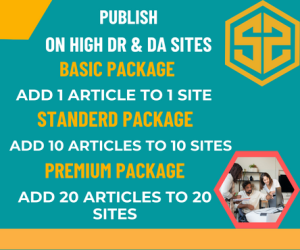Introduction
Technical SEO is essential for ensuring that search engines can effectively crawl, index, and rank a website. However, managing technical SEO manually can be time-consuming and prone to human error. Automation allows SEO automation professionals to streamline processes, improve efficiency, and maintain site health with minimal manual intervention.
Benefits of Automating Technical SEO
- Efficiency: Reduces manual workload and saves time.
- Consistency: Ensures tasks are executed systematically.
- Scalability: Makes it easier to manage large websites.
- Early Issue Detection: Identifies and resolves issues before they impact rankings.
Key Areas for SEO Automation
1. Website Crawling and Auditing
Automating site audits helps identify issues like broken links, duplicate content, and missing meta tags. Popular tools include:
- Screaming Frog SEO Spider
- Sitebulb
- Google Search Console
- Ahrefs & SEMrush Site Audit Tools
2. Log File Analysis
Server log analysis helps track how search engines interact with a website. Automated tools like Screaming Frog Log File Analyzer and Splunk can process logs to identify crawl errors and inefficiencies.
3. Monitoring Indexing and Crawlability
Automation can track indexing issues using:
- Google Search Console API
- Bing Webmaster Tools API
- Sitemap Monitoring Scripts
4. Structured Data Validation
Using structured data enhances search engine understanding. Automate validation using:
- Google Rich Results Test API
- Schema Markup Validator
- Screaming Frog’s Structured Data Checker
5. Page Speed Optimization
Page speed impacts rankings and user experience. Automate performance checks using:
- Google Lighthouse API
- PageSpeed Insights API
- WebPageTest Automation Scripts
6. Broken Link Checking
Broken links can harm user experience and SEO. Automate detection using:
- Ahrefs Broken Link Checker
- Screaming Frog SEO Spider
- Integrity (Mac users)
7. Redirect Management
Handling 301, 302, and 404 errors properly is crucial. Automate redirection audits using:
- Redirect Path Chrome Extension
- Screaming Frog SEO Spider
- .htaccess Automation Scripts
8. Rank Tracking and Reporting
Automate rank tracking and reporting using:
- Google Data Studio (Looker Studio) + Search Console API
- SEMrush/Ahrefs Rank Tracker
- Moz Pro Rank Tracker
9. Internal Linking Automation
Optimize internal linking using:
- WordPress Plugins (e.g., Link Whisper)
- Screaming Frog Crawl Analysis
- Ahrefs Internal Link Opportunities
10. AI and Machine Learning for SEO Automation
Advanced AI tools can analyze data and suggest improvements. Popular AI-driven SEO tools include:
- ChatGPT for content analysis
- SurferSEO for on-page optimization
- MarketMuse for content strategy
How to Implement SEO Automation
- Identify repetitive SEO tasks that can be automated.
- Select the right tools based on your needs.
- Integrate APIs and scripts where necessary.
- Monitor performance regularly and adjust as needed.
- Combine automation with manual review for the best results.
Conclusion
Automating technical SEO can significantly improve efficiency, accuracy, and site performance. While automation handles repetitive tasks, human oversight ensures strategic decision-making and content quality. Implementing the right tools and workflows will help businesses stay ahead in the ever-evolving SEO landscape.
